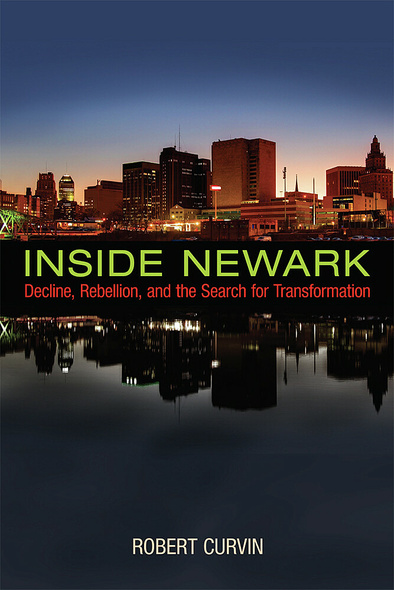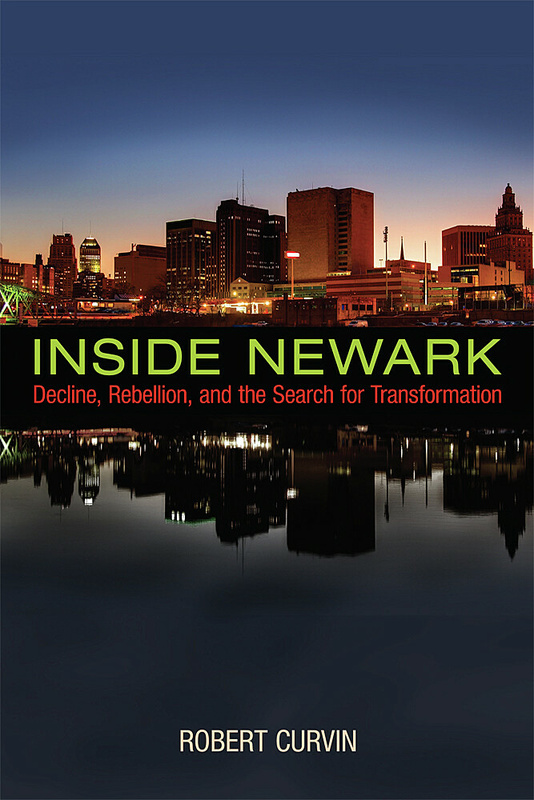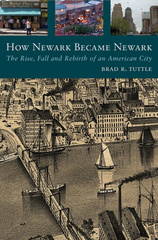
Inside Newark
Decline, Rebellion, and the Search for Transformation
Based on historical records and revealing interviews with over one hundred residents and officials, Inside Newark traces Newark’s history from the 1950s, when the city was a thriving industrial center, to the era of Mayor Cory Booker. Along the way, Curvin covers the disturbances of July 1967, called a riot by the media and a rebellion by residents; the administration of Kenneth Gibson, the first black mayor of a large northeastern city; and the era of Sharpe James, who was found guilty of corruption. Curvin examines damaging housing and mortgage policies, the state takeover of the failing school system, the persistence of corruption and patronage, Newark’s shifting ethnic and racial composition, positive developments in housing and business complexes, and the reign of ambitious mayor Cory Booker.
Inside Newark reveals a central weakness that continues to plague Newark—that throughout this history, elected officials have not risen to the challenges they have faced. Curvin calls on those in positions of influence to work for the social and economic improvement of all groups and concludes with suggestions for change, focusing on education reform, civic participation, financial management, partnerships with agencies and business, improving Newark’s City Council, and limiting the term of the mayor. If Newark’s leadership can encompass these changes, Newark will have a chance at a true turnaround.
Curvin's associations and key figures, extensive interviews and institutional memory mesh forcefully and lend amplitide to the narrative. Anyone who resides in or near Newark, or once did, or feels like a stakeholder in the great urban outcome should dwell deeply on his journey.
[Curvin] offers readers an insider's view of Newark politics and policy development. At times his narrative resembles a memoir, so personal are some of his observations. Nonetheless, his candor is refreshing, sincere, and well informed.
Robert Curvin's aggressive research, candid narration, and unflinching judgments leave you informed, sobered, and guardedly optimistic that a once beleaguered city's search for transformation is at last well underway. Inside Newark is a book in the great tradition of Steffens's The Shame of the Cities.
At once deeply personal and probing, Bob Curvin's brilliantly illuminating journey into Newark's contemporary life and history sets a high standard for an insider's view of a complicated and troubled urban landscape. That he is one of the nation's most prescient humanists and activists makes Curvin's Inside Newark essential reading. A triumph!
Bob Curvin’s masterful analysis shows how one of America’s greatest cities has dealt with a convergence of challenges during the past half century. He combines powerful reminiscences, strong community voices, a grasp of complex political entanglements, and unique personal insight to produce a detailed and intimate account of Newark’s struggle for survival.'
Curvin's associations and key figures, extensive interviews and institutional memory mesh forcefully and lend amplitide to the narrative. Anyone who resides in or near Newark, or once did, or feels like a stakeholder in the great urban outcome should dwell deeply on his journey.
[Curvin] offers readers an insider's view of Newark politics and policy development. At times his narrative resembles a memoir, so personal are some of his observations. Nonetheless, his candor is refreshing, sincere, and well informed.
Robert Curvin's aggressive research, candid narration, and unflinching judgments leave you informed, sobered, and guardedly optimistic that a once beleaguered city's search for transformation is at last well underway. Inside Newark is a book in the great tradition of Steffens's The Shame of the Cities.
At once deeply personal and probing, Bob Curvin's brilliantly illuminating journey into Newark's contemporary life and history sets a high standard for an insider's view of a complicated and troubled urban landscape. That he is one of the nation's most prescient humanists and activists makes Curvin's Inside Newark essential reading. A triumph!
Bob Curvin’s masterful analysis shows how one of America’s greatest cities has dealt with a convergence of challenges during the past half century. He combines powerful reminiscences, strong community voices, a grasp of complex political entanglements, and unique personal insight to produce a detailed and intimate account of Newark’s struggle for survival.'
ROBERT CURVIN authored Inside Newark while a visiting scholar at the Edward J. Bloustein School of Planning and Public Policy at Rutgers University. He passed away in 2015. The New York Times said he was "a fiercely loyal advocate for Newark who never gave up on his troubled city and devoted a scholarly career to alleviating urban poverty."
Dr. Curvin was a co-founder of the Newark chapter of the Congress of Racial Equality, successfully lobbied to integrate construction jobs in the early 1960s, earned a doctorate from Princeton, helped make Kenneth A. Gibson the first black mayor of a major Northeast city when he won election in Newark in 1970, and was a Ford Foundation official. He also served on the editorial board of The New York Times for nearly six years and was a dean at the New School in Manhattan.
Introduction
Chapter 1: About Newark
Chapter 2: Winds of Change
Chapter 3: The Collapse of the Machine
Chapter 4: Rebellion and City Politics
Chapter 5: Political Mobilization in Black Newark
Chatper 6: The Arrival of Black Power
Chapter 7: The Dancing Mayor
Chatper 8: Black Mayor on a White Horse
Chapter 9: Pity the Children
Conclusion: The Search for Transformation
Notes
Bibliography






